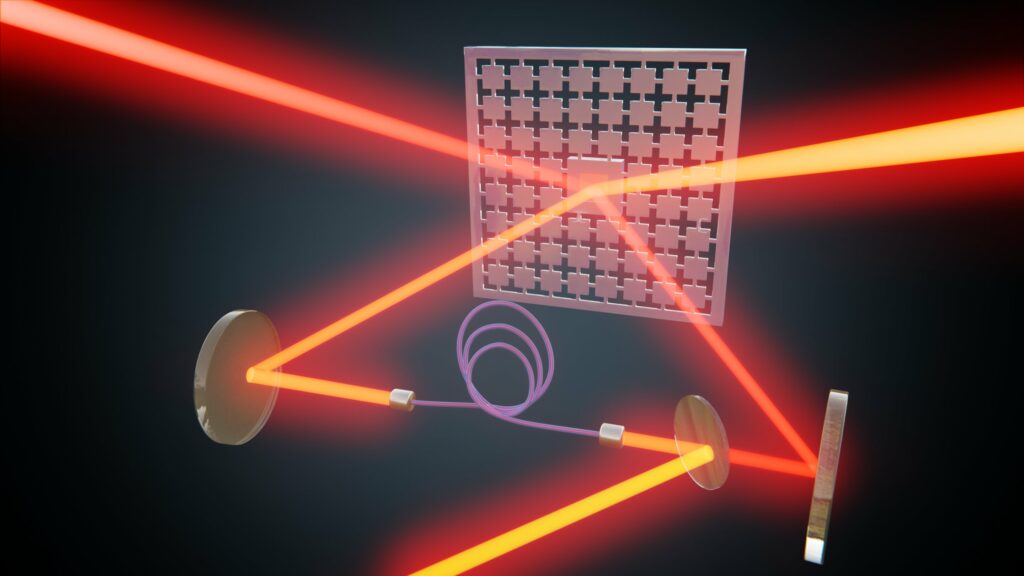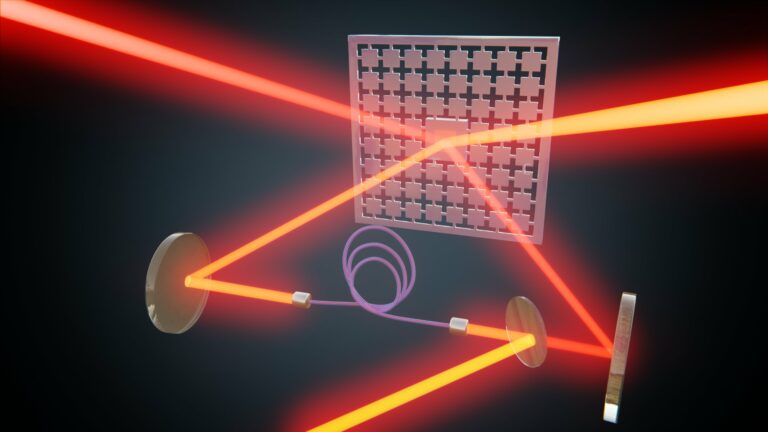Scientists Detail a Novel Method for Laser Cooling of Membranes
With a new technique, researchers at the University of Basel have achieved the cooling of a small membrane to temperatures near absolute zero, solely utilizing laser light. Such membranes, cooled to extremely low temperatures, could find applications in highly sensitive sensors.
Around 400 years ago, German astronomer Johannes Kepler conceptualized solar sails for ships to traverse the universe, based on the idea that light imparts force when reflected by an object. In modern times, scientists leverage this light force, among other methods, to decelerate and cool atoms and particles, typically requiring complex apparatus. The University of Basel research team, led by Prof. Dr. Philipp Treutlein and Prof. Dr. Patrick Potts, has now managed to cool a thin membrane close to absolute zero (minus 273.15 degrees Celsius) using only laser light. The findings were recently published in the journal Physical Review X.

Feedback without measurement
“What sets our method apart is that we achieve this cooling effect without conducting any form of measurement,” says physicist Maryse Ernzer, a Ph.D. student and the primary author of the research paper. According to the principles of quantum mechanics, a measurement, typically required in a feedback loop, induces a change in the quantum state, leading to disturbances. To circumvent this issue, the scientists in Basel devised a coherent feedback loop wherein the laser light serves as both a sensor and a damper.
This approach allowed them to dampen and cool the thermal vibrations of a silicon nitrate membrane, measuring about half a millimeter in size. In the experiment, a laser beam was directed onto the membrane, and the reflected light was fed into a fiber optic cable. During this process, the membrane’s vibrations caused slight changes in the oscillation phase of the reflected light.
The information on the instantaneous motional state of the membrane, contained in that oscillation phase, was then utilized—with a time delay—to apply the precise amount of force on the membrane at the correct moment, using the same laser light. Ernzer explains, “It’s a bit like slowing down a swing by briefly touching the ground with one’s feet at the right time.” To achieve the optimal delay of around 100 nanoseconds, the researchers employed a 30-meter-long fiber optic cable.
Close to absolute zero
“Professor Potts and his collaborators devised a theoretical framework for the new technique and calculated the parameters to achieve the lowest temperatures; this was subsequently validated by the experiment,” states Dr. Manel Bosch Aguilera, a postdoc contributor to the study.
Together with his colleagues, they successfully cooled the membrane to 480 micro-Kelvin—less than a thousandth of a degree above absolute zero. In the next phase, the researchers aim to enhance their experiment to reach the membrane’s ultimate possible temperature—the quantum mechanical ground state of its oscillations. Subsequently, creating squeezed states of the membrane should become feasible. These states are particularly intriguing for sensor construction, as they enable higher measurement accuracy. Potential applications of such sensors include atomic force microscopes, employed for surface scanning with nanometer precision.
This article is republished from PhysORG under a Creative Commons license. Read the original article.
Do not forget to share your opinion with us to provide you with the best posts !




0 Comments